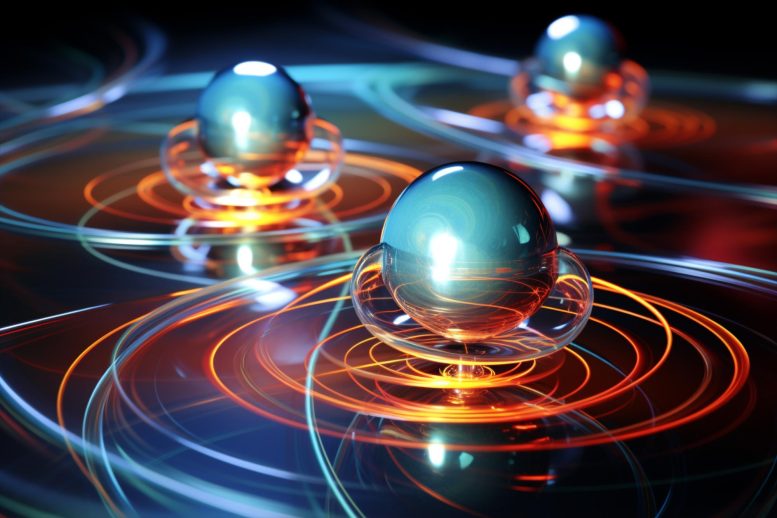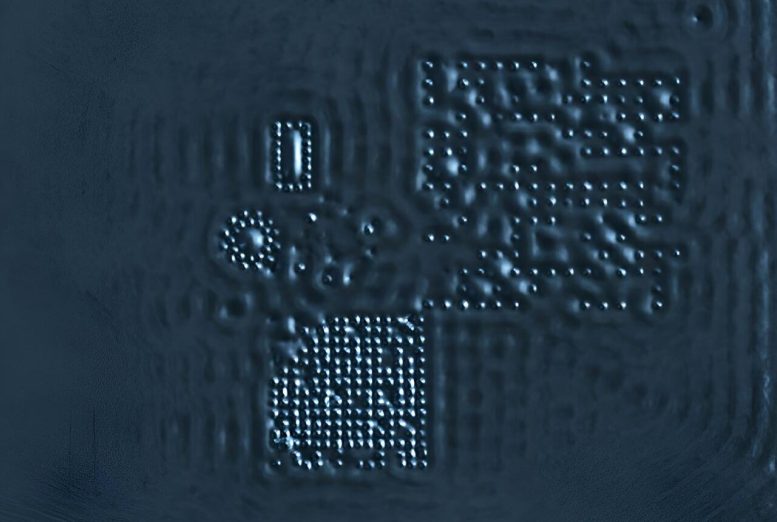
Pairing of Electrons in Artificial Atoms Discovered
Researchers from the Department of Physics at Universität Hamburg, observed a quantum state that was theoretically predicted more than 50 years ago by Japanese theoreticians but so far eluded detection. By tailoring an artificial atom on the surface of a superconductor, the researchers succeeded in pairing the electrons of the so-called quantum dot, thereby inducing the smallest possible version of a superconductor. The work appears in the latest issue of the journal Nature.
Electron Behavior and Superconductivity
Electrons typically repel each other because of their negative charge. This repulsion phenomenon plays a significant role in influencing many material properties, one of which is electrical resistance. However, the situation changes drastically if the electrons are “glued” together into pairs thereby becoming bosons. Unlike solitary electrons that repel one another, bosonic pairs can coexist in the same space and execute identical motions.

One of the most intriguing properties of materials containing these electron pairs is superconductivity — the ability to allow an electrical current to pass through without any resistance. Superconductivity has been harnessed for numerous technological applications over the years, such as magnetic resonance imaging and highly sensitive magnetic field detectors. With the ongoing miniaturization of electronic devices, there’s a growing interest in understanding how superconductivity can be achieved in smaller, nanoscale structures.
Electron Pairing in Artificial Atoms
Researchers from the Department of Physics and The Cluster of Excellence “CUI: Advanced Imaging of Matter” at Universität Hamburg, have now realized the pairing of electrons in an artificial atom called a quantum dot, which is the smallest building block for nanostructured electronic devices. To that end, experimentalists led by PD Dr. Jens Wiebe from the Institute for Nanostructure and Solid State Physics locked the electrons into tiny cages that they built from silver, atom by atom.
By coupling the locked electrons to an elemental superconductor, the electrons inherited the tendency towards pairing from the superconductor. Together with a team of theoretical physicists of the Cluster, led by Dr. Thore Posske, the researchers related the experimental signature, a spectroscopic peak at very low energy, to the quantum state predicted in the early 70ies of the last century by Kazushige Machida and Fumiaki Shibata.
While the state has so far eluded direct detection by experimental methods, recent research by teams from the Netherlands and Denmark shows it is beneficial for suppressing unwanted noise in transmon qubits, a crucial building block of modern quantum computers.
In a private email communication, Kazushige Machida wrote to the first author of the publication, Dr. Lucas Schneider: “I thank you for ”discovering” my old paper a half-century ago. I thought for a long time that transition metal non-magnetic impurities produce the in-gap state, but the location of it is so near the superconducting gap edge, thus it is impossible to prove its existence. But by your ingenious method, you have finally checked it to be true experimentally.”
Reference: “Proximity superconductivity in atom-by-atom crafted quantum dots” by Lucas Schneider, Khai That Ton, Ioannis Ioannidis, Jannis Neuhaus-Steinmetz, Thore Posske, Roland Wiesendanger and Jens Wiebe, 16 August 2023, Nature.
DOI: 10.1038/s41586-023-06312-0
Never miss a breakthrough: Join the SciTechDaily newsletter.
3 Comments
The locking of silver atoms in a cage of quantum dots through an artificial method is rather guided by a natural principle of Thermodynamic Photon Transfer through Quantum Mechanical Oscillations of Nucleus and Electrons in Atom.The principle relates
Einstein’s General Relativity to Star Radiation Effect due to Star Dynamics in the Galaxy. So,thanks to the authors for verification of this principle through experimental demonstration on event of superconductivity.
Do you understand the true physical environment of quantum states? Do you think analogizing quantum with a cat is scientific? Low dimensional spatiotemporal matter is the foundation of high-dimensional spatiotemporal matter. Topological vortices are point defects in two-dimensional spacetime. Point defects do not only impact the thermodynamic properties, but are also central to kinetic processes. According to topological vortex gravitational field theory, the interactions and balances of topological vortex fields cover all short-distance and long-distance contributions, and are the basis of the formation and evolution of cosmic matter. Understanding how topological vortices interact with each other is more conducive to your scientific understanding of paired particles in quantum mechanics.
Noticing a similarity in a different material the twisted graphene may act in the same manner as pairing to a structure.